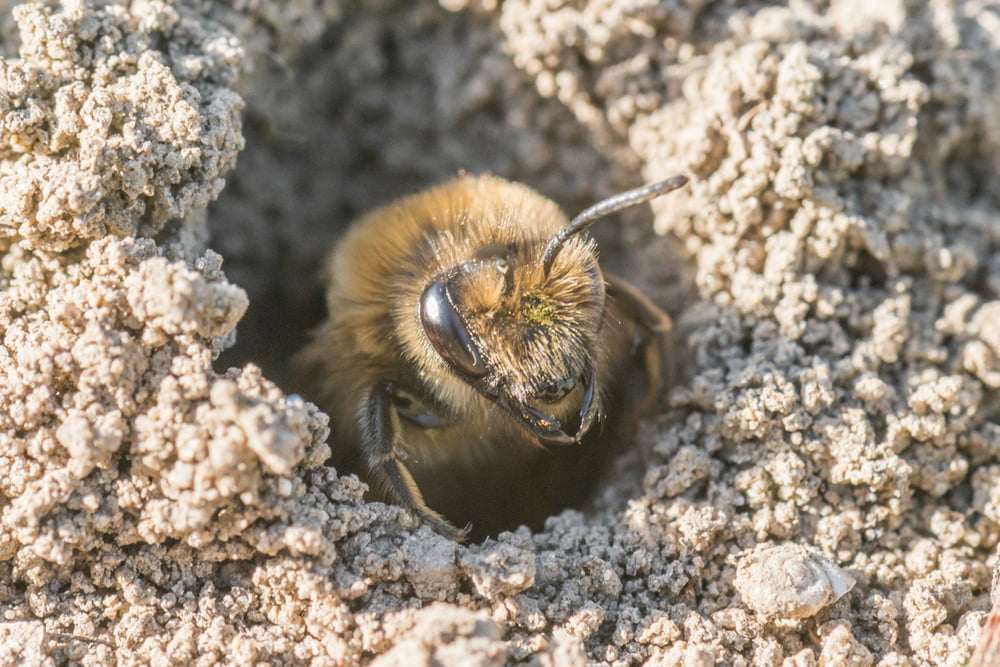Earth bees are not pests, in fact they are very useful for plants in the garden. Nevertheless, they can be a nuisance if they appear in large numbers. How to recognize ground bees and whether you are better off living with them or driving them away in an animal-friendly way, you can read here.
Earth bees, also called sand bees, are wild bees that – as their name suggests – nest in sandy places in the earth. In total, there are about 150 different species of ground bees in Europe.
Contents
Recognizing ground bees
While there are many different species of ground bees, they often have similar external characteristics:
- Ground bees grow between 5 and 16 millimeters long.
- Ground bees are usually hairy on the legs and body and have black, brownish or reddish coloring (There are several color variations, gradations and patterns).
- Female Earth Bees have shallow pits on the inside of the eyes (called the “fovea facialis”) and often have a prominent hair curl (flocculus) at the base of the legs.
- Male ground bees are usually more slender than females. Sometimes they have a brightly spotted head.
How do ground bees live?
In the spring, when it begins to get warmer, ground bees emerge from their nests in the ground. When they do, the males hatch a little earlier than the females and buzz around near the ground looking for females. During the mating season, therefore, ground bees can be very numerous. However, the males cannot sting and are therefore harmless.
After mating, the males die and the mass appearance of the insects then stops as suddenly as it began. It usually takes about four weeks – usually between April and July – for calm to return to the garden. The females live solitary and start building their nests. They are now hardly noticed in the garden. However, some species fly longer into late summer.
Ground bees live in nests on the ground, which can be seen from the outside as very small piles of soil with a hole in the center. Often the nests are located in sandy places. Since the insects prefer sunny and dry places, they nest in the garden mainly in sunny places, i.e. on slopes or in beds, but now and then also directly in the lawn.
Expel or relocate ground bees?
Although ground bees are not pests, many garden owners still feel disturbed by them, especially when they appear in masses in spring. But since these rare insects are protected species, they cannot simply be killed or relocated. Relocation must be applied for with an exceptional permit from the nature conservation authority in accordance with §62 of the Federal Nature Conservation Act.
If this is approved, the nests of the ground bees are generously dug up and relocated. In most cases, however, the authority rejects such applications, since earth bees are not a danger but, on the contrary, a great benefit.
Expel earth bees in an animal-friendly way
Who would like to have its garden nevertheless gladly “earth bee free”, can drive the insects out as follows:
Since ground bees prefer to nest in sunny places, one option is to shade the nests (with plants or a parasol). This way the insects will possibly look for a new place.
Earth bees prefer dry places in the soil, so you can make it uncomfortable for them by keeping the soil moist at all times. But be careful: never put the nests under water, otherwise the animals will drown!
In principle, however, anyone who has ground bees in their garden can consider themselves very lucky to have these increasingly rare subtenants. Insects have increasing problems finding food and nesting sites. Instead of driving them away, it is therefore a good idea to make the garden extra insect-friendly, for example with an insect hotel and a wildflower meadow.


